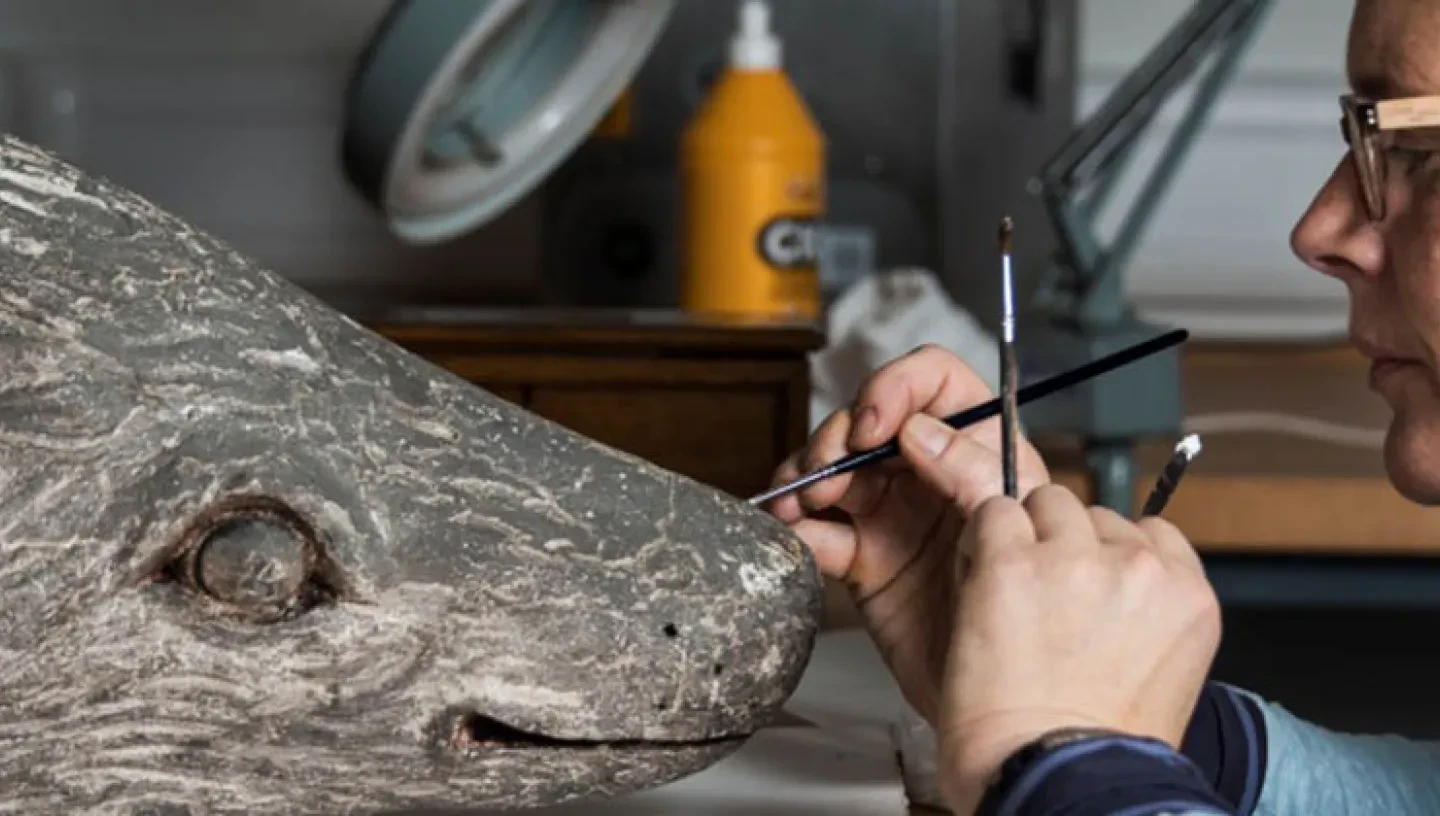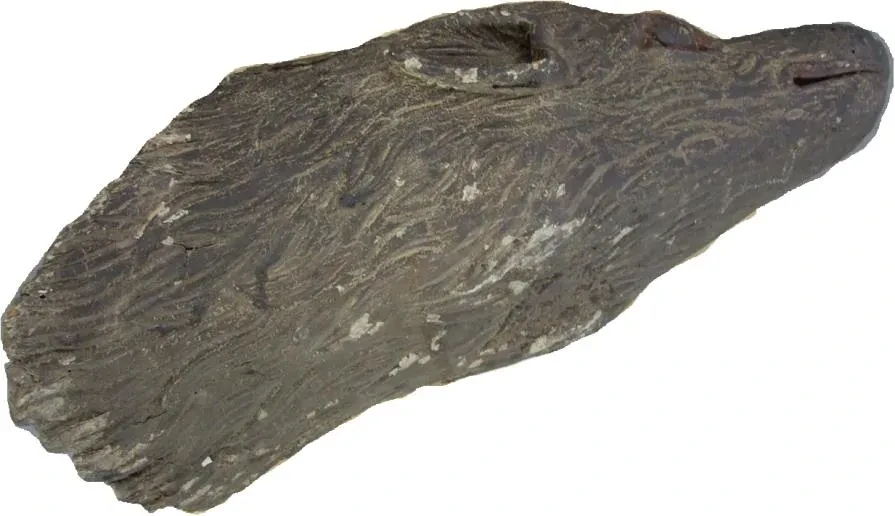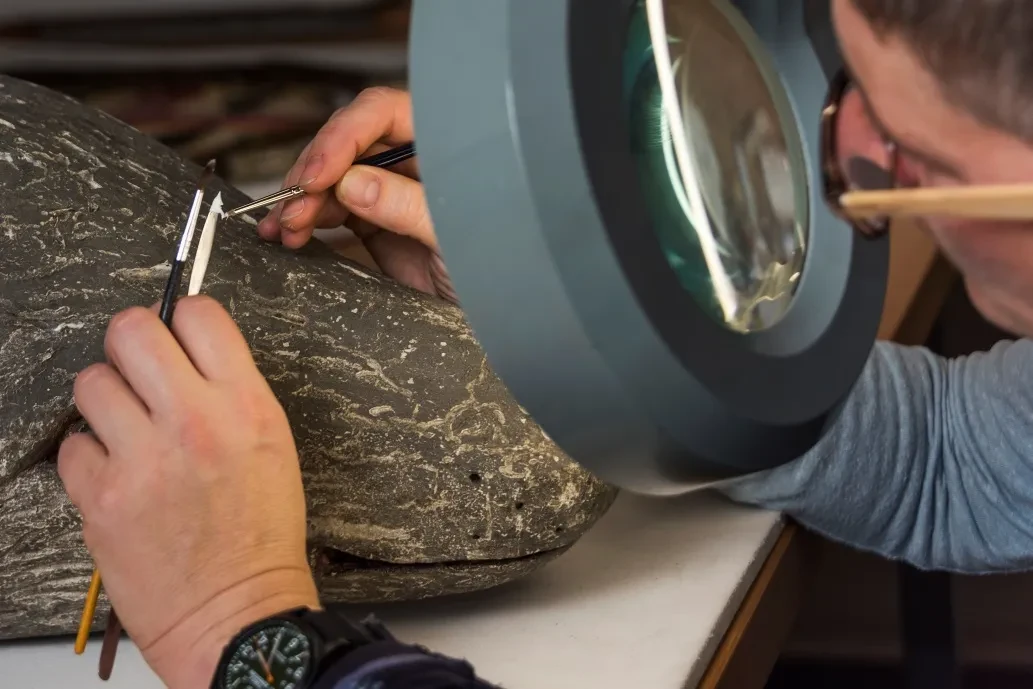
The lead paint on this figurehead was once as white as a polar bear's fur. Helen Robertson applied a technique from paper conservation to lighten this 3D object.
var axel = Math.random() + "";
var a = axel * 10000000000000;
document.write('');
By Helen Robertson, Object Conservator
The figurehead, depicting the head of a polar bear, is from the Arctic exploration vessel HMS Resolute and on display in our Polar Worlds gallery. She was abandoned in Baffin Bay by Sir Edward Belcher's Franklin Search Expedition in September 1855 but was later salvaged by an American whaler from New Bedford, arriving home, to Chatham, in December 1856.
We were always a little baffled by the darkness of the paint finish but tests soon confirmed our suspicions that a once white polar bear, finished in lead white paint, had discoloured through oxidisation of the lead component to a dark grey.

At the chemist's
Drawing inspiration from an established technique, used to whiten darkened lead white paint in paper conservation, I sought to apply this to a 3D object. The aim is to convert the darkened lead sulphide (PbS) to lead sulphate (PbSO₄) which is nearly identical to the original artists material of lead carbonate (Pb(OH)₂ ∙2PbCO₃).
In order for me to achieve this, I made a gel of 3% hydrogen peroxide solution mixed with laponite, a synthetic smectic clay. This was applied to the surface and wrapped in clingfilm to help retain the moisture. After several tests I decided that the best results were achieved after six to eight hours of contact. The gel was then removed and, as you will see below, in most areas, I was successful in lightening the surface.
Arctic adventures
The oxidation of lead white was not the only problem that I encountered. The integrity of the surface paint had been undermined through exposure to extreme conditions. This is likely to have been caused by the excessive expansion and contraction caused by ice crystallisation, during its Arctic adventures. The substrate had pulled away from the paint creating channels below the surface. This resulted in the surface layer being extremely vulnerable to breaking away, especially during handling.
After surface consolidation, I created a 80:20 Lascaux 360:Microballon paste to support the surface finish, and cushion from external pressure and fed this through the channels to fill the voids. When dried this paste remained sufficiently malleable to facilitate future substrate movement but resilient enough to offer adequate cushioning.
After a little colour matching to the Lascaux fills the bear is now ready for display in our new Kristian Gerhard Jebsen: Polar Worlds gallery.
